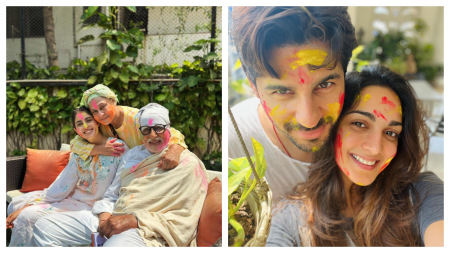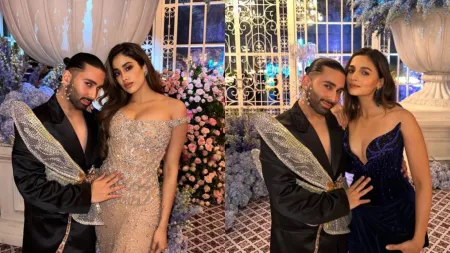- India
- International
Hindi classics that defined the 1970s
A decade of huge cultural significance, the seventies foisted the tag of ‘angry young man’ on Amitabh Bachchan, Rishi Kapoor shot to overnight fame with RK rom-com Bobby and not to mention, Sholay – a curry Western that embodied everything that Bollywood stands for.
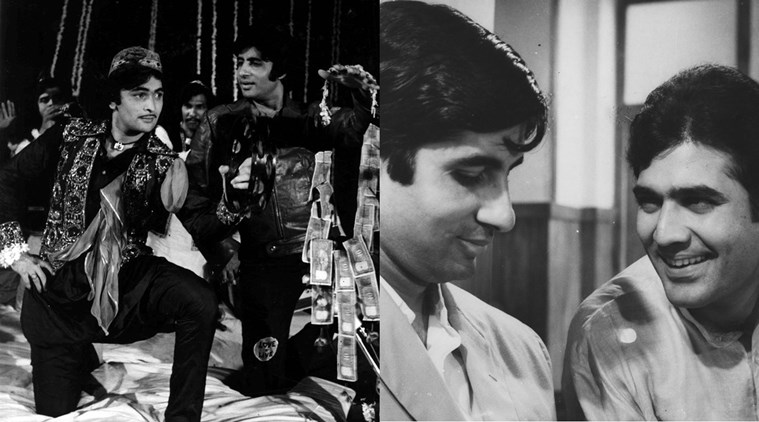 A look at the Bollywood films that shaped 1970s.
A look at the Bollywood films that shaped 1970s.
Arguably the most influential decade vis-à-vis its impact on India’s popular culture, the decade 1970s is uniquely placed in the Bollywood pantheon. Neither too old for movie-goers to forget its memories so easily nor too recent to have it taken for granted, the Seventies is monumental in Indian consciousness as it epitomised masala Bollywood at its imaginative best. You can’t get better than Anand, Sholay, Amar Akbar Anthony, Chupke Chupke, Don and Bobby, can you? Look at that epic line-up and one name towers over them all. The decade had such stalwarts like Vinod Khanna, Shatrughan Sinha, Manoj Kumar and Shashi Kapoor operating at their peak while Rishi Kapoor and Amol Palekar were busy running their own little cottage industries in young-puppy love stories and middle-of-the-road underdog comedies respectively but fortunately, or unfortunately, it was Amitabh Bachchan who single-handedly bulldozed his way to the top. So final and enduring was his domination that he was dubbed “one man industry.”
Driving the Amitabh Bachchan phenomenon was another star of the 1970s. Script mavens Salim-Javed didn’t want to die unsung and fought their way out of writerly wilderness. Not content with merely playing a thankless, behind-the-scene role that most scriptwriters of the time were consigned to, they hired a man to quietly go from suburb to suburb and add the name Salim-Javed to Zanjeer’s posters. The new posters read, ‘Salim-Javed’s Zanjeer’ and the writer duo, Salim Khan and Javed Akhtar, had arrived. Directed by Prakash Mehra, Zanjeer gave birth to the angry young man, the screen persona that Amitabh Bachchan invoked in film after film in the 1970s. Though Salim-Javed designed Vijay as a character beset by unfulfilled desires, poverty and a victim of social inequality thus justifying his diatribe against the system, over the years he was quickly appropriated to reflect a larger political reality. In the aftermath of the Emergency, declared by Indira Gandhi, Vijay (ironically, off-screen, the Bachchan family were close Gandhi aides) became a political and social creation and subsequently, a voice of the angry and unemployed youth who would take the route of crime to make it big. But not always did the game end well for Vijay. In Deewaar, he’s shot at by his police officer brother (Shashi Kapoor). The message can’t be clearer: crime doesn’t pay and good always wins.
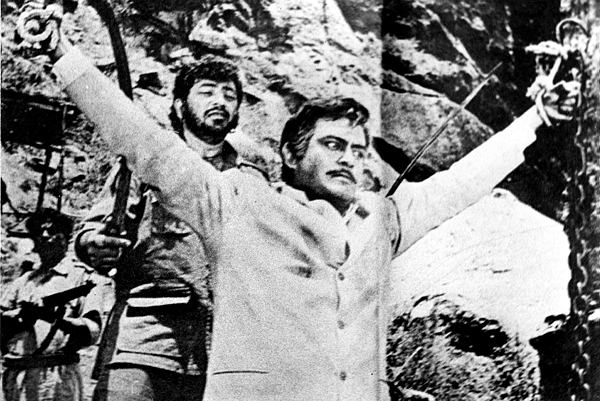 Amjad Khan and Sanjeev Kumar in Sholay.
Amjad Khan and Sanjeev Kumar in Sholay.
It is against this backdrop that the 1970s can be seen and appreciated. Meanwhile, there were other hits, too, that make the 1970s a landmark. To start with, Sholay – which, in its Sergio Leone-esque grandeur and enduring beauty, has passed into the realm of memes. You can say that Rishi Kapoor’s frothy rom-coms and Amol Palekar-Hrishikesh Mukherjee-Basu Chatterjee’s beloved hits like Gol Maal and Chhoti Si Baat provided much-needed comic relief. Besides, the decade also saw the emergence of the parallel cinema movement, led by Shyam Benegal, Mani Kaul and Govind Nihalani and others whose emphasis on social realism shifted the spotlight out of the Bollywood dreamspace to the harsh realities of the Indian life.
In the third of our ongoing essay series called ‘Hindi classics that defined the decade,’ we round up the films that shaped 1970s.
Anand (1971)
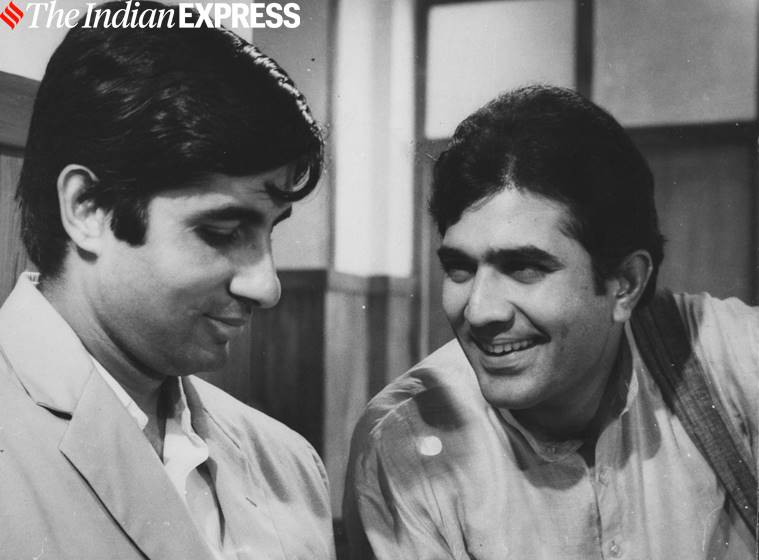 Amitabh Bachchan and Rajesh Khanna in Anand. (Express archive photo)
Amitabh Bachchan and Rajesh Khanna in Anand. (Express archive photo)
One of Hrishikesh Mukherjee’s best-loved classics, Anand stars Rajesh Khanna, then at the height of his astounding stardom, as the titular character who knows how to have a good laugh about life – and death. He keeps those around him amused with his constant antics and yet, at the heart of that character is pathos. Rajkumar Hirani, one of the many directors inspired by the Hrishikesh Mukherjee school of filmmaking, has cited Anand as a major influence. Presenting the film at the 16th Mumbai Film Festival, he remarked about being “blown away” by Anand the first time he saw it. Anand was his introduction to Mukherjee’s cinema. Explaining the film’s structure, the Munnabhai director told the festival audience, “There’s no great plot. Right in the first scene you tell the world that Rajesh Khanna is going to die. It defies all logic of filmmaking.”
Pakeezah (1972)

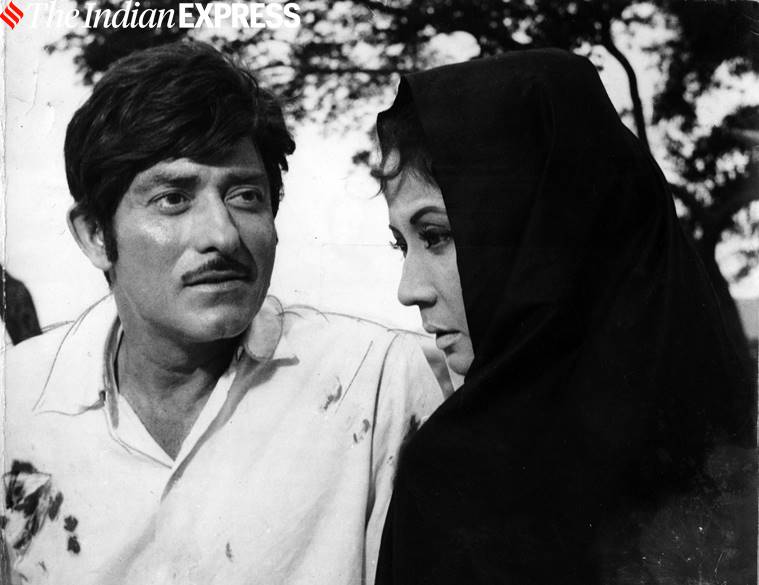 Rajkumar and Meena Kumari in Pakeezah. (Express archive photo)
Rajkumar and Meena Kumari in Pakeezah. (Express archive photo)
The poetic beauty and grandeur of this Kamal Amrohi epic can only be matched by the sheer intensity of its maker’s love for Meena Kumari – the dreamy-eyed courtesan of the film – and the struggle with which this production was finally completed. It is believed that the film was conceived in 1955 and by the time it released, nearly 16 years later, much had changed about Hindi cinema and its audiences. Legend has it that Pakeezah flopped upon initial release. But then, weeks later, Meena Kumari died and grieving fans thronged the cinema halls in thousands to ensure a swan song for the departed tragedienne.
Zanjeer (1973)
 Amitabh Bachchan and Jaya Bachchan in Zanjeer. (Express archive photo)
Amitabh Bachchan and Jaya Bachchan in Zanjeer. (Express archive photo)
Dharmendra was the first choice for Zanjeer. Next, Dilip Kumar turned it down. Even Dev Anand was considered for the role of the stern-faced, upright cop Vijay. Finally, Salim-Javed suggested the name of a lanky rising star called Amitabh Bachchan. Zanjeer propelled Bachchan into overnight stardom. The rest of the decade would see the star reprise the Vijay formula, an anti-hero who doesn’t romance or even smile, in sharp contrast to the 1960s Hindi hero and his flair for song, dance, flirtation and bonhomie best exemplified by Dev Anand and Shammi Kapoor. The Emergency had a direct effect on the creation of Vijay. A product of the political and economic turmoil (rising unemployment, for example) of the times, Vijay is angry and the tag stuck on Mr Bachchan for life.
Bobby (1973)
 Rishi Kapoor and Dimple Kapadia in Bobby. (Express archive photo)
Rishi Kapoor and Dimple Kapadia in Bobby. (Express archive photo)
The same year that Amitabh Bachchan burst on the scene, with Zanjeer, also marked the entry of Raj Kapoor’s young son about to set teeny hearts aflutter with Bobby. That was Rishi Kapoor. From all given evidence, Bobby, also starring the debuting Dimple Kapadia, was the biggest hit of 1973 followed by Yash Chopra’s Rajesh Khanna starrer Daag. Despite Bachchan’s overwhelming dominance of the 1970s, Rishi Kapoor held on to his own thanks to his boyish charm and titanic talent. “I may have not slept on pavements or gone hungry and had a huge hit in Bobby, but then on what?” Kapoor told a newspaper. “I was in the choppy sea all my life. I was battling the huge hurricane of action movies and competing with stars such as Amitabh Bachchan, Dharmendra, Shatrugan Sinha, and so on. I was a romantic hero in an action-films era.”
Ankur (1974)
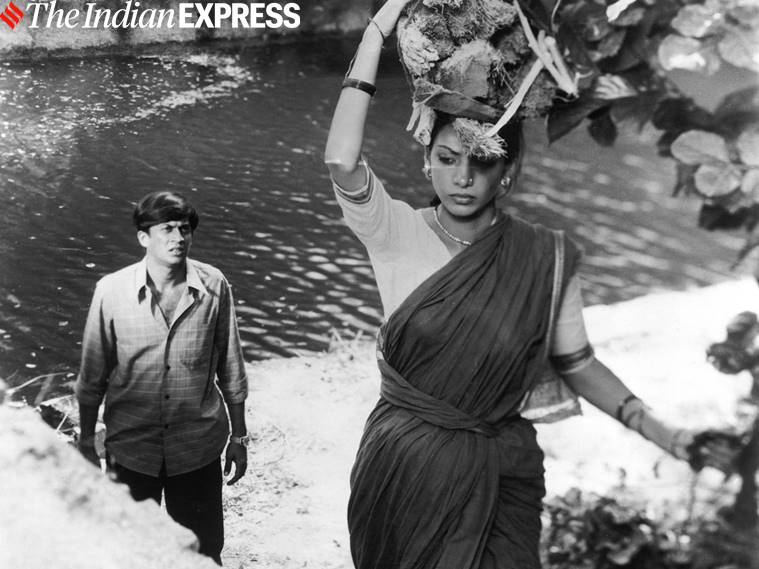 A still from Shyam Benegal’s Ankur. (Express archive photo)
A still from Shyam Benegal’s Ankur. (Express archive photo)
The 1970s was an unusual era. Alongside mainstream blockbusters, there was also a flourishing middle-of-the-road and parallel cinema/new wave scene. Ranked as a parallel movement classic, Shyam Benegal’s Ankur explores the themes of caste and social exploitation, among more. The film pivots on Shabana Azmi, who speaks the Deccan language that the story demands with delicious timing. Benegal was initially reluctant to cast her but with her terrific turn, Azmi proved that she could do both mainstream and art-house films with aplomb. In doing so, she became the unofficial conduit between the two diverse industries.
Deewaar (1975)
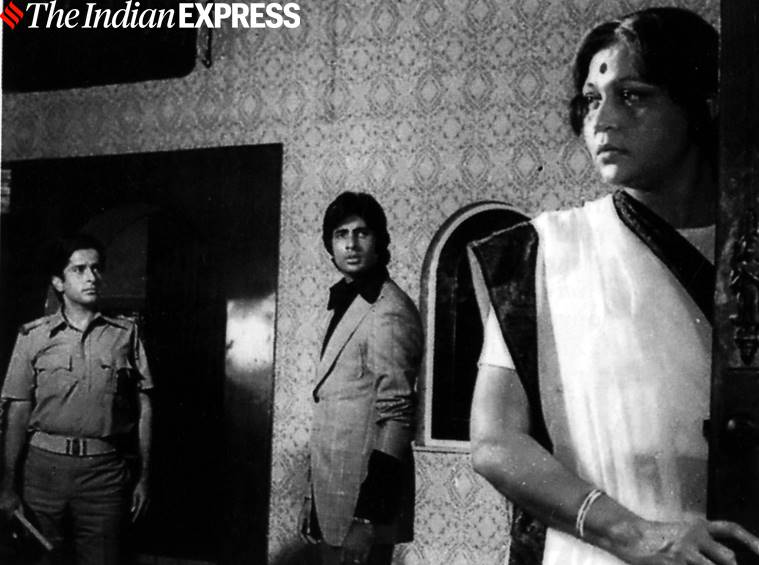 Shashi Kapoor, Amitabh Bachchan and Nirupa Roy in Deewar. (Express archive photo)
Shashi Kapoor, Amitabh Bachchan and Nirupa Roy in Deewar. (Express archive photo)
According to Javed Akhtar, one half of Salim-Javed, Zanjeer made Amitabh Bachchan but it was Yash Chopra’s Deewaar that established him. Salim Khan has called it their most perfect screenplay. A classic tale of two brothers on the opposite sides of the law (loosely based on don Haji Mastan’s life), Bachchan teams up with Shashi Kapoor and Nirupa Roy to give us some of Hindi cinema’s most memorable moments. Deewaar’s inimitable dialogue is still quoted by film buffs. As Bachchan has pointed out, “The words were gems. You don’t find that kind of writing anymore.” Vijay’s (Bachchan) angry outburst against God in the temple scene is an enduring favourite. (Spoilers ahead). He would eventually die in the arms of his mother, shot at by his own brother, in the temple. To those inclined to label Vijay of Deewaar as an atheist, Javed Akhtar has clarified, “Vijay wasn’t an atheist, but he was upset with God. He wasn’t on talking terms with God.”
Sholay (1975)
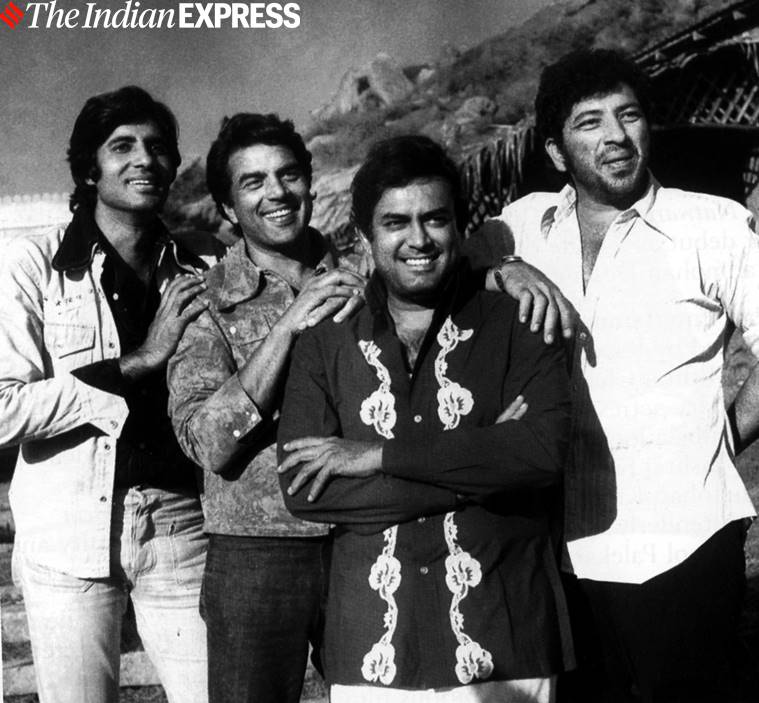 Amitabh Bachchan, Dharmendra, Sanjeev Kumar and Amjad Khan on the set of Sholay. (Express archive photo)
Amitabh Bachchan, Dharmendra, Sanjeev Kumar and Amjad Khan on the set of Sholay. (Express archive photo)
This is one film that Indians know by heart. We invoke Jai, Veeru, Thakur, Basanti, Mausi and Gabbar as though they are our friends and we know them personally. The film’s lines (“Kitne aadmi the,” “Basanti inn kutto ke saamne mat naachna,” or “Yeh haath humko dede Thakur”) have achieved pop culture immortality. Widely regarded as Bollywood’s greatest blockbuster, Ramesh Sippy’s Sholay is an epic story of petty criminals Jai (Bachchan) and Veeru (Dharmendra) who are hired by an avenging retired cop (Sanjeev Kumar) to help nab Gabbar Singh (Amjad Khan), a feared dacoit. Jai and Veeru are inspired by the bounty hunters of Hollywood’s Westerns and Gabbar, the grimy baddie out to terrorise the townfolk, from Sergio Leone’s apocalyptic landscape that you can’t find on any map. One canny addition is Basanti (Hema Malini), the spunky horse carriage rider who can’t keep her mouth shut.
Chupke Chupke (1975)
 Dharmendra and Sharmila Tagore in Chupke Chupke. (Express archive photo)
Dharmendra and Sharmila Tagore in Chupke Chupke. (Express archive photo)
Hrishikesh Mukherjee dismantles the all-star credentials of Dharmendra, Sharmila Tagore and Amitabh Bachchan and turns them into the well-behaved gentry. In this comedy of manners, all characters including a brilliant Om Prakash (“Genius jijaji,” Sharmila Tagore teases an envious Dharmendra) and Asrani, are learned professors and men of education, business and wealth who can’t resist a practical joke. Dharmendra’s (a well-known professor masquerading as an Allahabadi driver) chaste Hindi skills and the Shakespearean Bachchan’s botany knowledge – or the lack of it – gives viewers a comic orgasm.
Aandhi (1975)
 Suchitra Sen in Aandhi. (Express archive photo)
Suchitra Sen in Aandhi. (Express archive photo)
As a filmmaker, Gulzar has a political and social consciousness that’s amply reflected in Aandhi. You might want to look at Aandhi either as an allegory on the much-chronicled life of Indira Gandhi or as an intimate and deeply personal film about the complexities of human relationship and both could be true. Whether you find any political meaning in it or not, rest assured that Aandhi is a poetic vision of Gulzar in which music impacts the narrative in a powerful way. After Ijaazat, this is one film where music is the true star. Flashback to Tere bina zindagi and you will know that music and poetry is Aandhi’s soul.
Also Read | 1960s Bollywood was frothy, perfectly in tune with the high spirits of the swinging times | Shree 420 to Pyaasa, 10 immortal gems from 1950s Bollywood
Amar Akbar Anthony (1977)
 Shabana Azmi, Vinod Khanna, Neetu Singh, Rishi Kapoor, Parveen Babi and Amitabh Bachchan in Amar Akbar Anthony. (Express archive photo)
Shabana Azmi, Vinod Khanna, Neetu Singh, Rishi Kapoor, Parveen Babi and Amitabh Bachchan in Amar Akbar Anthony. (Express archive photo)
Amar Akbar Anthony wasn’t the first lost-and-found. Neither the first multi-starrer. But it could possibly be the best one. Led by a stellar star cast (Amitabh Bachchan, Vinod Khanna, Rishi Kapoor, Shabana Azmi, Pran, Parveen Babi and Neetu Singh), this Manmohan Desai blockbuster is a cocktail of great music, brilliant performances and vignettes, divine miracles, other leaps of logic and a grand reunion in the end. Vinod Khanna is at his unsmiling best, Bachchan and Kapoor share a crackling comic chemistry, Pran and Parveen Babi are stylish to the core and Neetu Kapoor – though she doesn’t have much to do – is a blast from the burkha. AAA is a thrilling entertainment, the cinematic equivalent of a wholesome Indian meal.
(Shaikh Ayaz is a writer and journalist based in Mumbai)
Click for more updates and latest Bollywood news along with Entertainment updates. Also get latest news and top headlines from India and around the world at The Indian Express.
Photos
Apr 26: Latest News
- 01
- 02
- 03
- 04
- 05






















